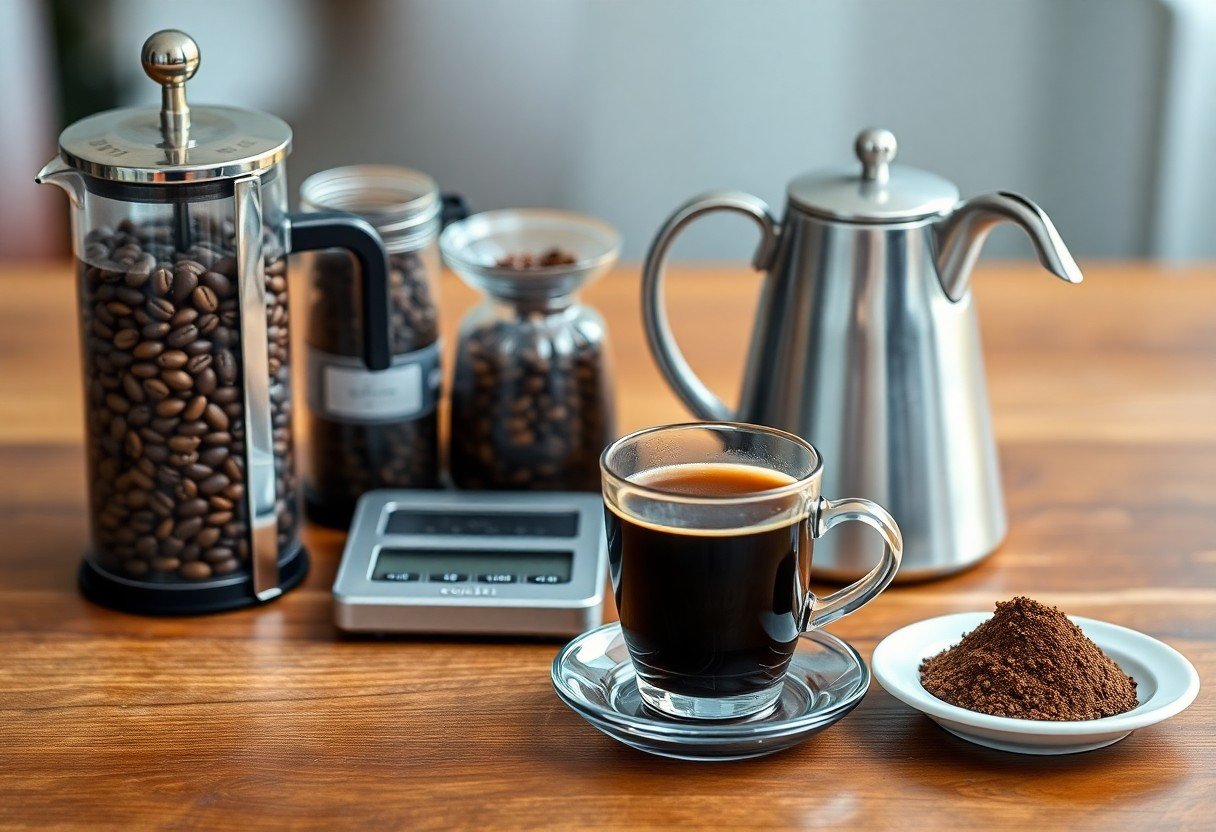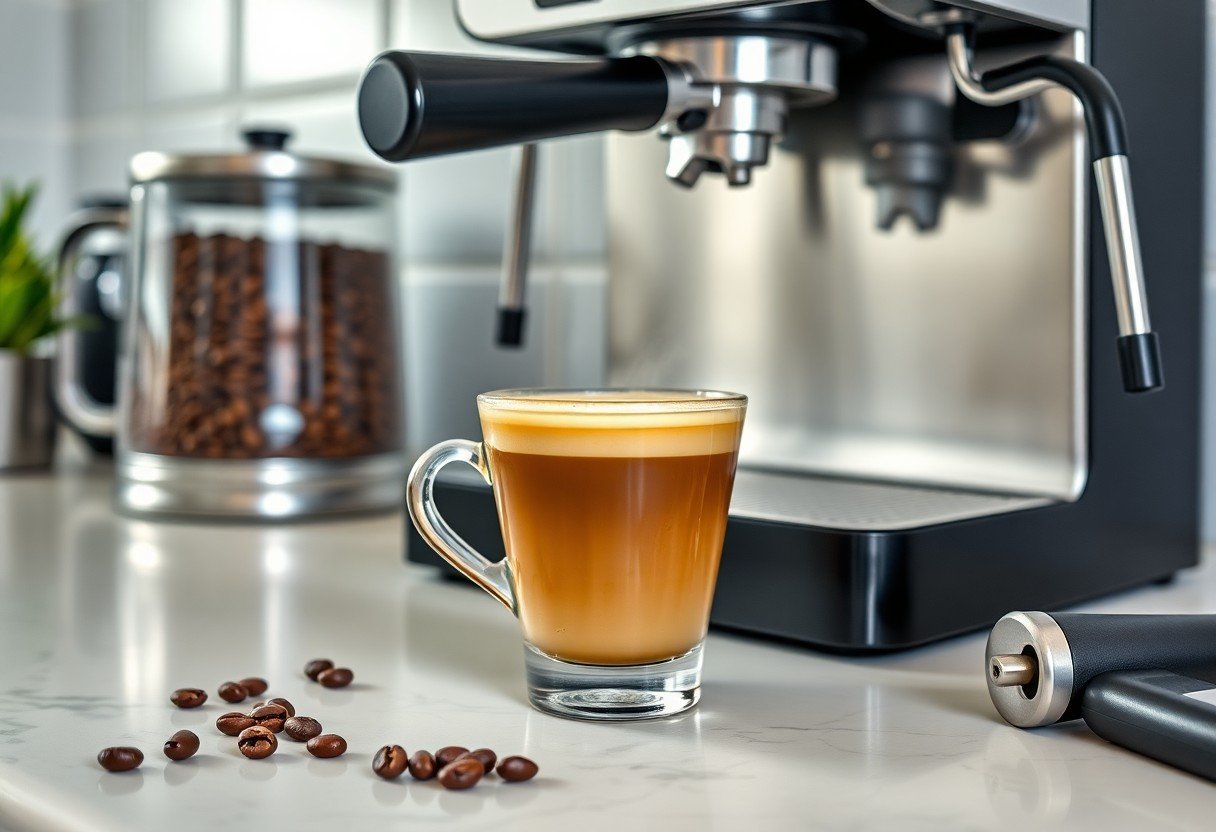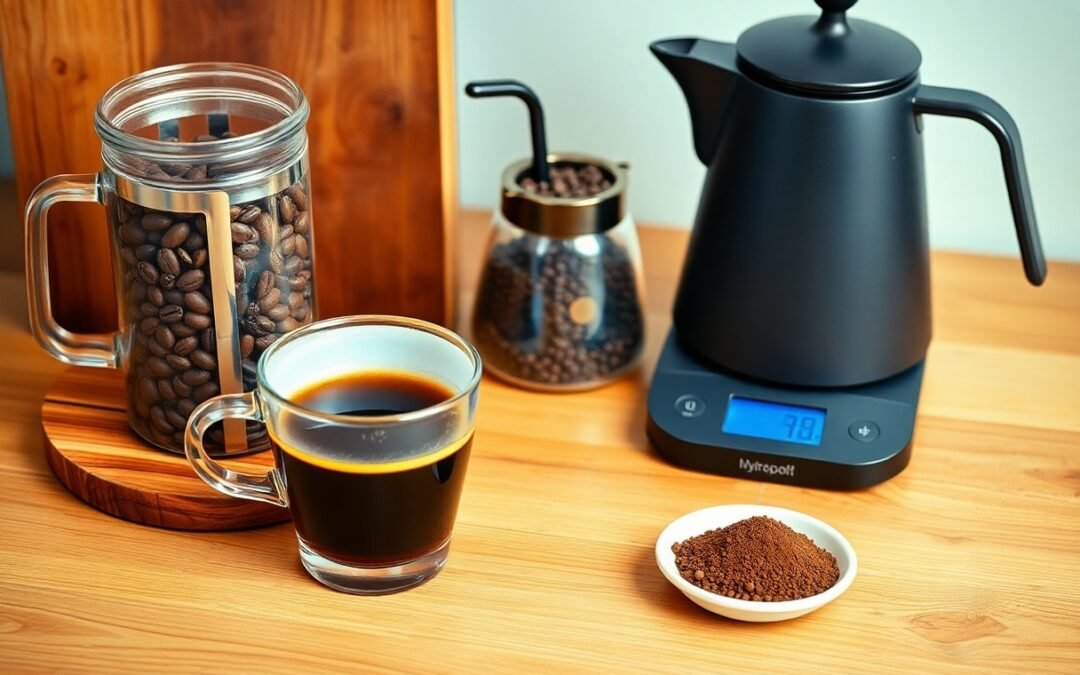Silky textures and rich flavors can elevate your coffee experience from ordinary to extraordinary. In this guide, you will discover crucial techniques and tools that enable you to craft a luxurious cup of coffee right in your kitchen. From selecting the finest beans to perfecting your brewing method, we’ll cover everything you need to transform your daily ritual into an indulgent experience. Get ready to impress yourself and others with your newfound expertise in creating the perfect silky-smooth cup.

The Perfect Bean: Choosing Quality Coffee
Selecting high-quality coffee beans is the foundation of every sophisticated cup. You want to focus on beans that are freshly roasted, ethically sourced, and specifically suited to your taste preferences. Look for single-origin beans from reputable growers, as these often provide unique flavor profiles and freshness that blends may lack. Certifications such as Fair Trade or Organic also indicate a commitment to quality and sustainability.
The Art of Sourcing: Where Great Coffee Begins
Your coffee journey begins at the source. Seek out local roasters or specialty coffee shops that prioritize artisan methods. These establishments often have a direct relationship with farmers, ensuring the beans are harvested at peak ripeness. Transparency in sourcing not only guarantees quality but also supports sustainable farming practices, ultimately enriching your coffee experience.
Understanding Roast Profiles: Light vs. Dark
Roast profiles significantly influence your cup’s flavor, aroma, and body. Light roasts boast bright acidity and fruity undertones, perfect for highlighting the bean’s origin. In contrast, dark roasts offer bold flavors with chocolatey or smoky notes, often masking unique characteristics. Your choice will define the final result, guiding your preferences for taste and texture.
Light roasts, such as a Kenyan or Ethiopian, maintain their inherent flavors, often showcasing floral or citrus notes, making them ideal for drinkers who appreciate a more nuanced profile. In contrast, a dark roast, such as a French or Italian blend, yields a richer, heavier body, with robust flavors that are strong and deeply appealing. Understanding these distinctions allows you to tailor your brew to your personal palate, creating moments of coffee enjoyment that resonate with your taste.
Precision in Preparation: Mastering Brewing Techniques
Achieving a silky-smooth cup demands precision in your brewing techniques. Each step from measuring to timing should be meticulous. Start with the right water temperature, ideally between 195°F to 205°F, to extract flavors optimally. Consistency is key; use a scale to measure your coffee and water ratios, typically a 1:15 ratio for a balanced flavor. Pay attention to brew times specific to your chosen method to ensure you harness the full spectrum of flavors without sourness or bitterness dominating your cup.
Grinding for Greatness: The Science of Grind Size
Your grind size directly influences extraction rate and flavor clarity. A coarse grind is perfect for methods like French Press, as it allows for slower extraction, while a fine grind suits espresso, allowing for rapid flavor release under pressure. Adjusting the grind size plays a vital role in balancing acidity and body—the finer the grind, the more flavorful but potentially bitter your brew can become. Experimentation will reveal your preferred grind for ideal extraction.
Brewing Methods Unpacked: French Press, Pour Over, and Espresso
Each brewing method has unique characteristics that significantly affect flavor. The French Press, with its steeping method, yields a full-bodied cup rich in oils, making it a favorite for those who enjoy robust flavors. Pour-over techniques allow for precise control during extraction, often resulting in a clean and vibrant taste. Espresso, on the other hand, uses high pressure to produce a concentrated shot, intensifying flavors and creating a creamy texture. Understanding these methods enables you to fine-tune your brewing process to suit your taste preferences.
The Magic of Water: Essential Elements for Flavor
Your coffee’s flavor profile heavily relies on the water you use. The right water enhances the brewing process and extracts the full potential of your selected beans. Soft water can lead to under-extraction, while hard water may overshadow the coffee’s delicate flavors. Aim for a balanced mineral content to unlock the rich nuances of your brew.
Water Temperature: The Ideal Range for Extraction
The optimal water temperature for brewing coffee ranges between 195°F to 205°F (90°C to 96°C). This range ensures proper extraction of oils and flavors without burning the coffee. Brewing outside this range can lead to bland brews or overly bitter tastes, impacting the overall experience.
Water Temperature Range
| Temperature (°F) | Extraction Quality |
|---|---|
| Below 195°F | Under-extracted, sour flavor |
| 195°F – 205°F | Optimal extraction, balanced flavors |
| Above 205°F | Over-extracted, bitter taste |
Filtration and Taste: Why Quality Water Matters
Using filtered water significantly affects your coffee’s taste. Tap water can contain chlorine, sediment, and other impurities that dull the subtle notes of your brew. Quality filtration removes these unwanted elements, ensuring that your coffee shines in flavor and clarity. Opt for a filtration system that targets common contaminants and retains beneficial minerals.
Different filtration methods can dramatically improve what goes into your cup. For instance, activated carbon filters are excellent at removing chlorine, while reverse osmosis systems can eliminate most impurities. If you’re aiming for a pure and aromatic coffee experience, investing in a high-quality filtration system is necessary. Even a modest filter can enhance the clarity and richness of your cup, enabling you to truly appreciate the delicate notes from your chosen beans.

The Touch of Craft: Enhancing Your Brew
Mastering the nuances of coffee preparation goes beyond just brewing; it’s about the intentional choices you make at each step. Elevating your home brew relies on understanding the role of temperature, grind size, and equipment. Investing time in learning your specific coffee maker or brewing method will allow you to experiment and ultimately find the perfect balance of flavors and aromas that align with your taste preferences.
Milk and Alternatives: Achieving the Perfect Texture
Textured milk can transform your coffee by adding creaminess and enhancing mouthfeel. Whether you choose whole milk, oat milk, or almond milk, the steaming process is key. Aim for a temperature between 150°F and 155°F to create microfoam that is silky and velvety. This foam is vital for latte art and provides that signature luxurious texture.
Flavoring Techniques: When and How to Experiment
Adding flavors should complement and enhance, not overpower, the coffee. Start with small amounts of syrups or spices like cinnamon to see how they interact with the coffee’s natural notes. Experimenting with flavor can occur during the brewing process, by adding a pinch of salt or a few drops of vanilla extract to the grounds before brewing, which can elevate the overall profile.
Consider timing and context when adding flavors. Infusing coffee with spices can be done by adding them to the grounds before brewing, allowing their essence to permeate the coffee. On the other hand, sweeter syrups and flavorings can be introduced after brewing to maintain a balance that doesn’t mask the coffee’s intrinsic flavors. Test different combinations to discover what enhances your cup; a dash of cardamom or a hint of orange zest can bring unexpected depth and vibrancy to your brew, making it uniquely yours.
Presentation Matters: Creating a Sophisticated Experience
A sophisticated cup of coffee is not just about taste; it’s also about the entire experience. Enhancing your coffee presentation elevates its appeal, allowing you to impress guests and indulge in a moment of luxury. Creating an inviting aesthetic involves using elegant serveware, arranging the setting thoughtfully, and paying attention to the details that invite admiration. The right ambiance, combined with visually delightful components, can transform a simple brew into a memorable occasion.
The Right Tools: Cups, Pouring Techniques, and Presentation
Selecting the right tools is vital for achieving a polished coffee experience. Opt for elegant cups that suit your coffee style—fine porcelain for heavier brews or delicate glass for lighter varieties enhances the look. Mastering pouring techniques like the swirl or controlled tilt not only improves flow but creates enticing visuals. The entire setup, including coasters or serving trays, should reflect sophistication, making every sip feel special.
Garnishes and Accompaniments: Elevating the Coffee Experience
Garnishes and accompaniments can elevate your coffee experience in delightful ways. A sprinkle of cocoa, a dash of cinnamon, or a dollop of whipped cream can enhance flavors and add visual flair. Pair your drink with fresh pastries or artisanal chocolates, amplifying the taste and inviting indulgence. A carefully selected side can complement your brew, creating a multi-dimensional experience that lingers on the palate.
Consider serving your coffee with thoughtfully chosen accompaniments from local bakeries or specialty shops. For instance, a slice of rich chocolate cake or a buttery croissant can enhance the indulgence of your beverage. Incorporating fresh herbs, like mint, or citrus zest in your presentation not only offers a burst of flavor but also a pop of color. Each element you add reinforces the experience, engaging the senses and inviting deeper appreciation for your meticulous craft.
Conclusion
On the whole, mastering the art of a silky-smooth sophisticated cup at home requires attention to detail and practice. By selecting high-quality ingredients, perfecting your brewing technique, and employing proper equipment, you can elevate your coffee experience. Take the time to experiment with different methods and flavors to find what suits your palate best. With dedication and a willingness to learn, you can enjoy café-quality coffee in the comfort of your own kitchen.
FAQ
Q: What type of coffee beans should I use for a silky-smooth cup?
A: Choose high-quality, freshly roasted Arabica beans. Look for medium to dark roasts that have flavor notes you enjoy, as these often provide a smoother taste profile.
Q: What brewing method is best for achieving a sophisticated cup?
A: Methods like pour-over, French press, or Aeropress are excellent choices. Each allows for control over brew time and temperature, which helps in developing a smooth texture.
Q: How does water temperature affect the smoothness of my coffee?
A: Using water between 195°F and 205°F optimizes extraction. Water that’s too hot can lead to bitterness, while cooler water may under-extract flavors, affecting overall smoothness.
Q: What role does milk or cream play in achieving a silky-smooth finish?
A: Adding steamed milk or high-quality cream can enhance mouthfeel and richness. Use full-fat dairy or plant-based options like oat milk for a creamier texture without overpowering the coffee flavor.
Q: How can I store my coffee beans to maintain freshness?
A: Store beans in an airtight container in a cool, dark place. Avoid exposure to moisture, light, and air, as these factors can significantly impact flavor and smoothness over time.

